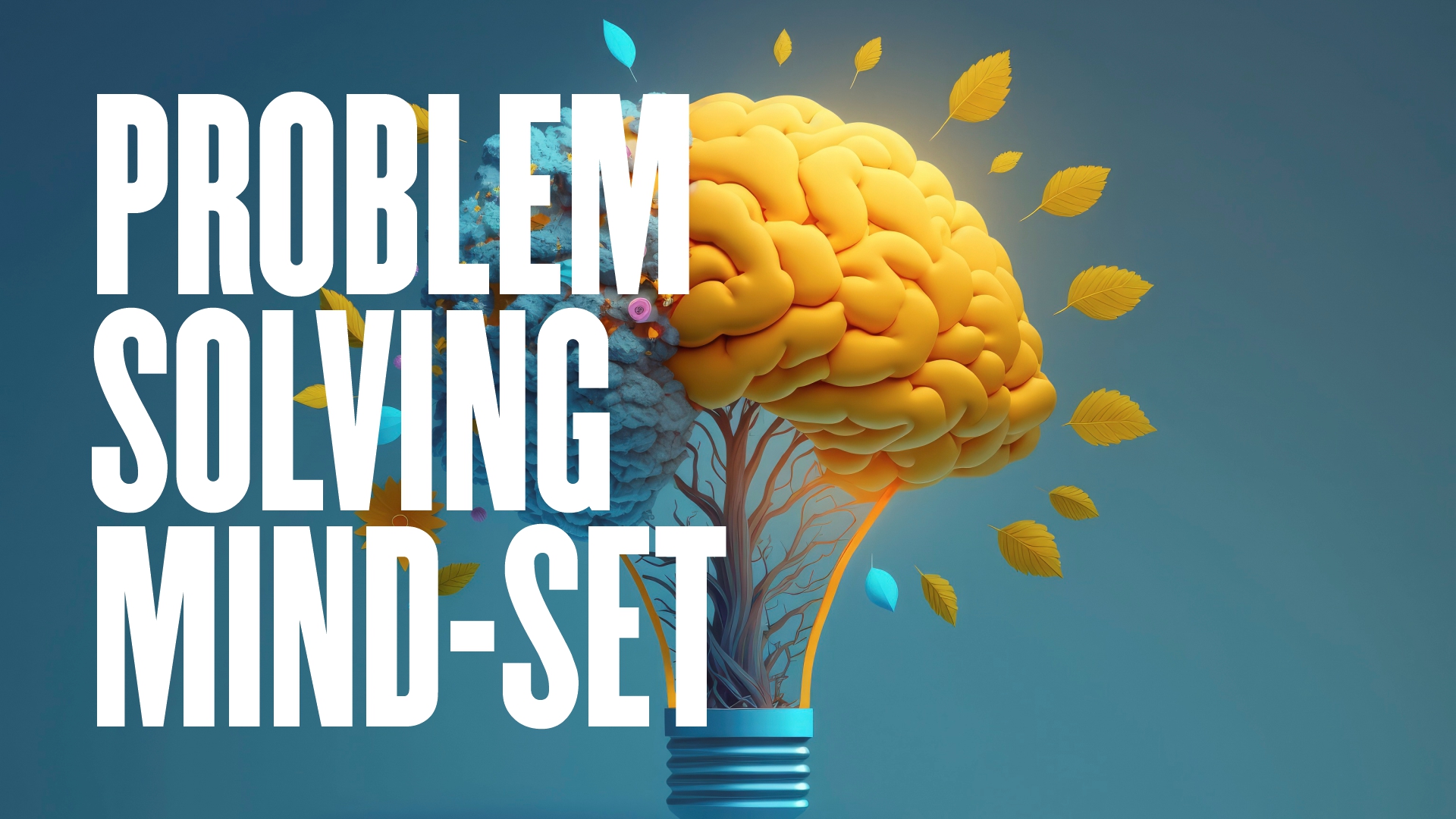Personal Development
Master the Problem-Solving Mindset: A Guide for Designers, Entrepreneurs & Business Leaders
11.02.2025
By Shaikh Asif

Personal Development
11.02.2025
By Shaikh Asif
Introduction to Problem-Solving Mindset
In an ever-competitive market, the brands that stand out are those that actively solve real problems for their audience. Building a successful brand is no longer just about visual appeal—it’s about addressing real-world challenges with a mindset rooted in resilience, curiosity, and adaptability. The goal? To engage your audience in ways that resonate on a practical level, inspiring loyalty and a positive reputation.
Developing a problem-solving mindset isn’t just beneficial; it’s essential. It’s about learning to see challenges as opportunities, thinking critically about underlying issues, and applying creativity to develop practical solutions. For designers, creative professionals, and business leaders, this mindset is the fuel behind lasting brand success.
At Alitestar, we don’t just create brand identities and logos; we’re deeply invested in developing brand solutions that are strategically crafted to address our clients’ unique challenges. From brand strategy to storytelling and messaging, each service we offer is rooted in our commitment to problem-solving.
The Role of Creative Problem-Solving in Today’s Market
Problem-solving is the driving force behind brand relevance and success. According to the World Economic Forum, skills like complex problem-solving, critical thinking, and creativity are now among the top skills essential to the modern workforce. With information more accessible than ever, customers expect brands to bring real value and address their needs, not just offer a product or service.
Research backs this up: studies show that customers are drawn to brands that actively engage with and respond to their pain points. This makes problem-solving a business imperative, not just a creative exercise. Every service we provide at Alitestar, from brand identity design to strategic brand messaging, is built to help brands identify and solve the problems that matter most to their audiences. This approach creates a more profound connection, turning clients into loyal advocates.

Step 1: Cultivating a Problem-Solving Mindset
A strong problem-solving mindset starts with adopting a growth-oriented approach to challenges. Dr. Carol Dweck’s research on the “growth mindset” demonstrates that individuals who see challenges as opportunities to learn and grow, rather than obstacles, are more likely to innovate and succeed.
To cultivate this mindset, try incorporating these actions into your daily routine:
Practice Daily Curiosity: Asking “why” frequently is a powerful tool. Each “why” peels back another layer, giving you deeper insight into potential solutions.
Embrace Mistakes as Learning Opportunities: Reframe mistakes as essential stepping stones. Take feedback—whether from clients, team members, or the market—as valuable information to refine your perspective.
At Alitestar, this mindset is at the core of our approach. It enables us to go beyond surface-level fixes, crafting solutions that align with each client’s long-term vision. We encourage our clients to see branding challenges as pathways for growth, using our services as strategic tools to overcome them.

Step 2: Identifying and Reframing Problems Effectively
The key to effective problem-solving is understanding the root issue. Too often, brands jump to quick solutions without digging deeper into the real problem, leading to fixes that don’t resonate.
One tried-and-true method is the “5 Whys” technique. By asking “why” multiple times, you reveal layers of insight that can lead to more effective solutions. Let’s say a brand feels “outdated.” Asking “why” might uncover that the brand’s messaging is no longer relevant to its audience, leading to a more strategic fix.
Practical Exercise: Try the 5 Whys with a current brand challenge. For instance, ask, “Why isn’t our brand identity resonating with today’s audience?” Going through each “why” could reveal deeper insights, helping you address the core issue rather than just surface symptoms.
At Alitestar, we incorporate this technique into our brand discovery phase, where we work closely with clients to define their true challenges. This ensures that the solutions we deliver are not only relevant but positioned for lasting impact.

Step 3: Brainstorm and Develop Solutions
Generating solutions isn’t about quantity; it’s about cultivating quality ideas through structured creativity. Effective brainstorming helps you approach problems with purpose and focus.
Consider using these structured brainstorming techniques:
Mind Mapping: Start with a central problem, then map out related ideas visually. This method helps you make connections that aren’t immediately obvious.
SCAMPER Technique: Substitute, Combine, Adapt, Modify, Put to another use, Eliminate, and Reverse. Each prompt forces you to think about solutions from new angles.
At Alitestar, we employ these tools in our creative sessions, particularly for projects involving brand identity and logo design. This approach keeps our brainstorming focused, yielding ideas that are both practical and aligned with the client’s objectives.

Step 4: Testing and Iterating Solutions
Once you have a solution, it’s essential to test, refine, and improve. A strong problem-solving approach involves creating prototypes, gathering feedback, and iterating based on what you learn.
Practical Steps for Testing:
Create Low-Fidelity Prototypes: Test ideas quickly and affordably with simple versions. This could be a rough draft of a logo, a basic website layout, or sample messaging. Early feedback will help you refine before committing resources.
Collect Diverse Feedback: Seek insights from varied sources, including team members, stakeholders, and even prospective clients, to ensure you’re addressing the problem effectively.
At Alitestar, this iterative process is part of our DNA. We work closely with our clients, encouraging feedback at every stage of a project. Our process is designed to build brands that grow and adapt, aligned with both the client’s vision and the market’s demands.

Overcoming Common Challenges in Problem-Solving
Building a problem-solving mindset has its share of challenges, but identifying these obstacles early can help you manage them more effectively. For many creatives and entrepreneurs, the fear of failure is a significant barrier to effective problem-solving. Here’s how to overcome common roadblocks:
Fear of Failure: Treat every attempt as a learning experience. When outcomes are reframed as valuable data, the fear of failure diminishes.
Overthinking: Break down large problems into manageable steps. Tackling small pieces helps maintain momentum and reduces overwhelm.
At Alitestar, we support our clients through these challenges, offering guidance and strategic solutions that simplify complex branding issues. Our approach turns potential roadblocks into manageable, actionable steps that lead to brand growth.

Conclusion: Building a Lasting Problem-Solving Culture
Building a problem-solving mindset isn’t a one-off effort; it’s a cultural shift that can transform your professional life and brand identity. By consistently solving meaningful problems, your brand builds credibility, loyalty, and depth, resonating with customers who value genuine engagement.
Ready to transform your brand into one that’s driven by purpose and problem-solving? At Alitestar, we’re here to help you build a brand that does more than look great—it solves real problems for real people. Our premium services, including brand strategy, identity design, storytelling, and web development, are crafted to turn branding challenges into opportunities for growth.


Shaikh Asif is an Award-winning designer, director, strategist, and educator. He’s the Lead Strategic Brand Designer and Art Director of The Alitestar— a strategic branding and design agency that helps startups, ambitious CEOs, and passionate entrepreneurs to achieve success and ultimately create unforgettable brand experiences.